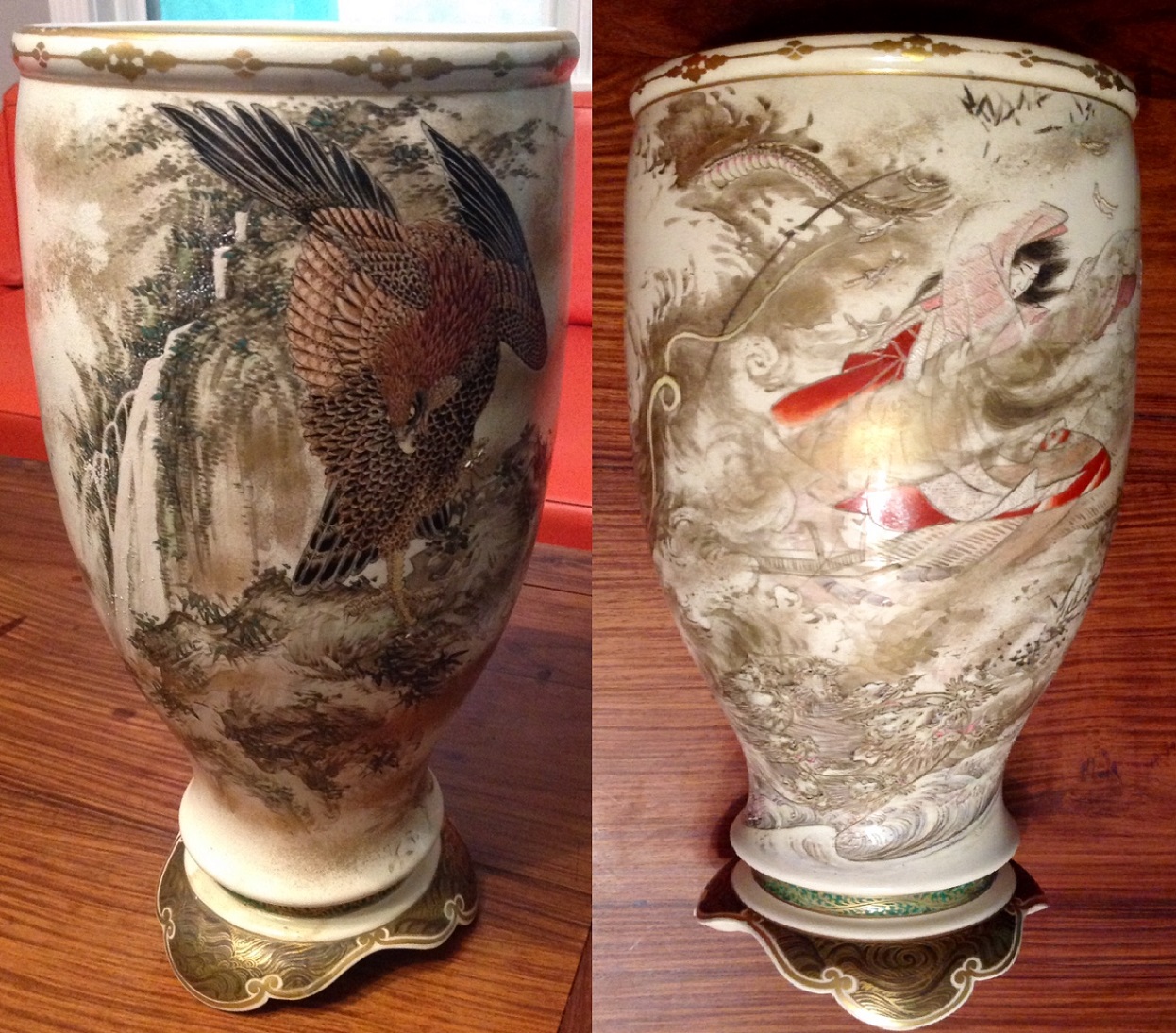
|
Subject:Re: Inscription & meaning behind Taizan Satsuma vase
Posted By: TimG Fri, May 25, 2018
Thank, Bill! Hugely helpful.
I copied and pasted your kanji of 瓢池園, dropping the last character 製, and got some interesting results.
The link below seems to identify this part of the mark as belonging to the Hyochien workshop, a predecessor of Noritake.
http://www.old-noritake.sakura.ne.jp/collection/etc/u.html
The site goes on to say that the artwork focus exclusively on people and birds & flowers, so this seems to be consistent with the subject matter of my vase.
It also appears, according to the next link I found (and if my Google translations are correct), that the early works of Hyochien workshop were exhibited at the World Fair.
http://kozan.blog.so-net.ne.jp/2014-04-06
So, perhaps no elaborate folklore story behind the depiction. On the other hand, maybe the scene is emblematic of the Meiji restoration period.
The Eagle, representing the Imperial family stands proudly, while the samurai, representing the Edo period, struggles to hold its ground against the winds of Imperial strength and change.
Or perhaps I'm just pulling at straws.
Best,
Tim


|
 Inscription & meaning behind Taizan Satsuma vase
Inscription & meaning behind Taizan Satsuma vase  ( China & Japan ) - TimG - May 23, 2018 (10:04 PM)
( China & Japan ) - TimG - May 23, 2018 (10:04 PM)  Re: Inscription & meaning behind Taizan Satsuma vase - Bill H - May 24, 2018 (03:23 AM)
Re: Inscription & meaning behind Taizan Satsuma vase - Bill H - May 24, 2018 (03:23 AM)  Re: Inscription & meaning behind Taizan Satsuma vase - TimG - May 25, 2018 (09:07 AM)
Re: Inscription & meaning behind Taizan Satsuma vase - TimG - May 25, 2018 (09:07 AM) 
.jpg)
.jpg)